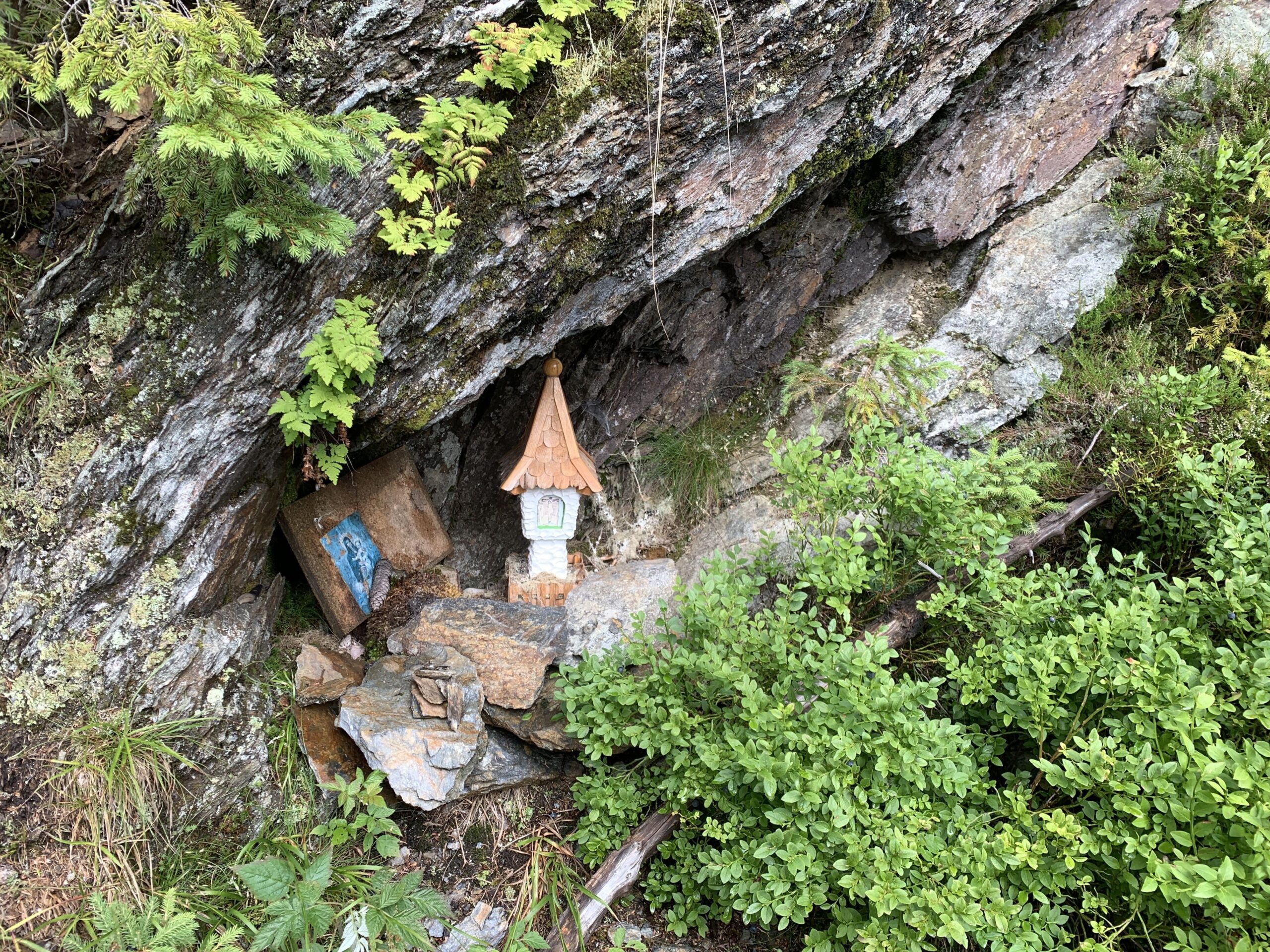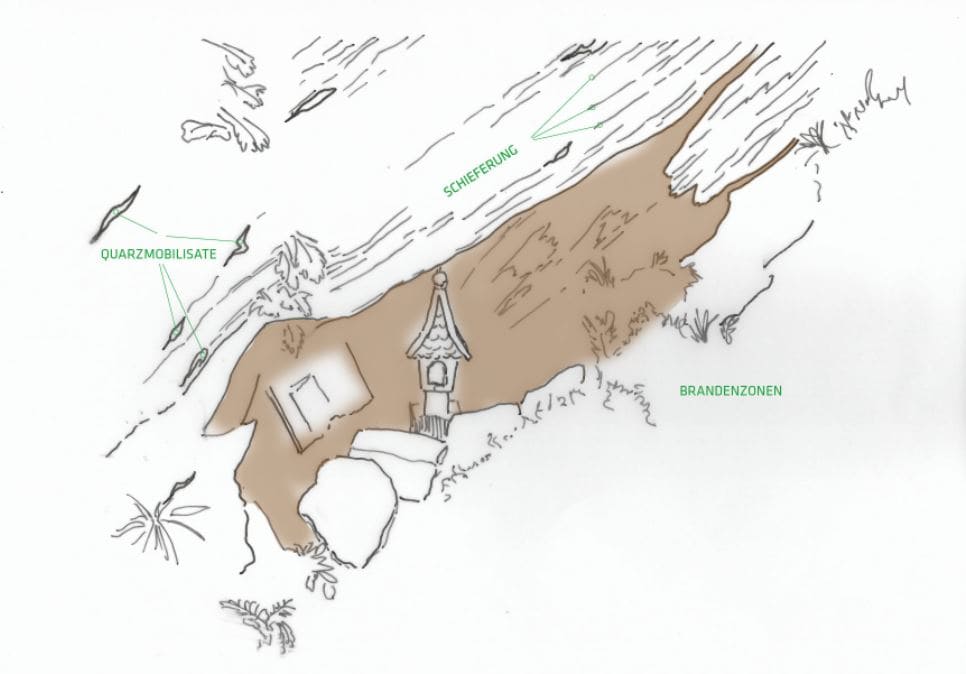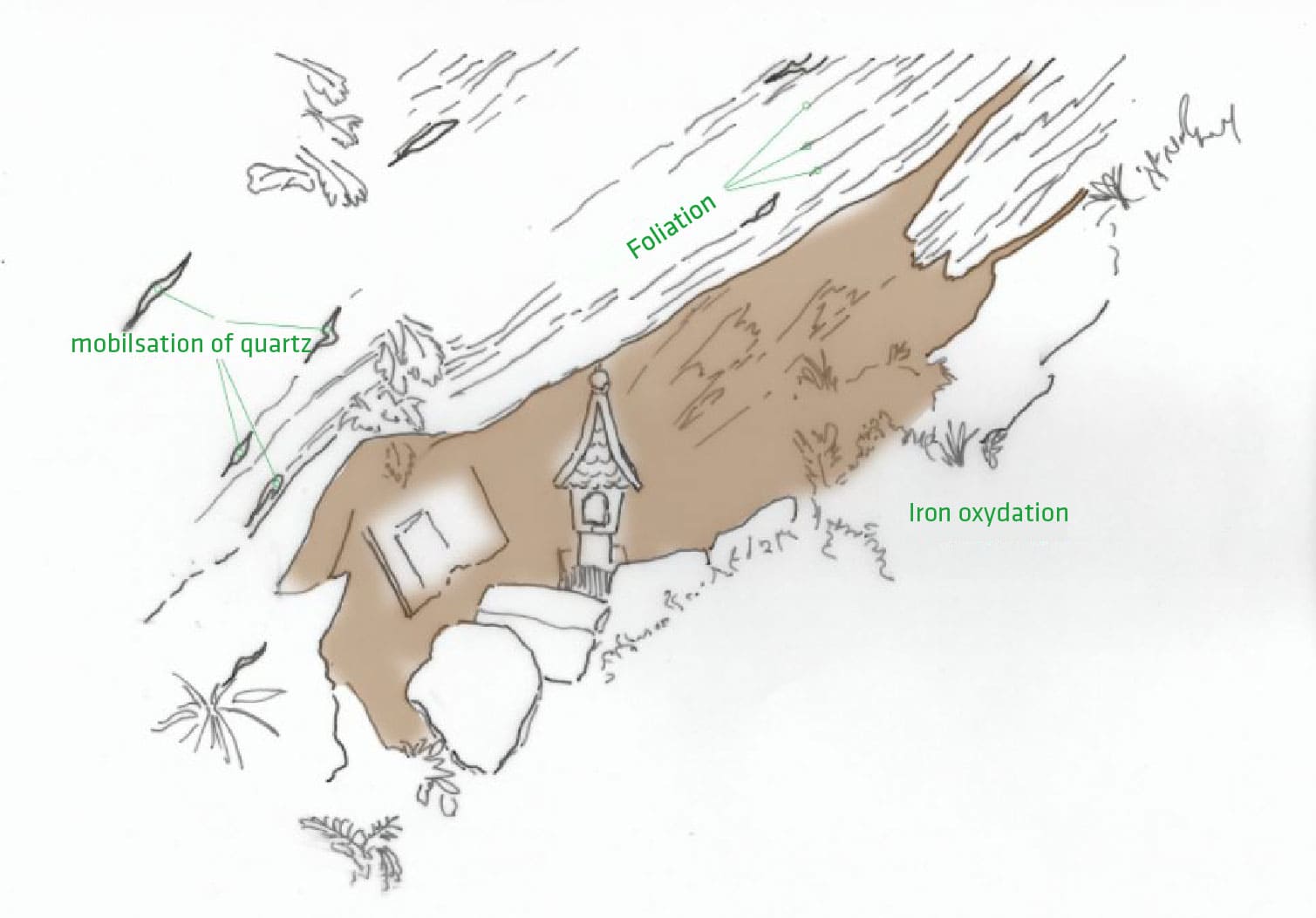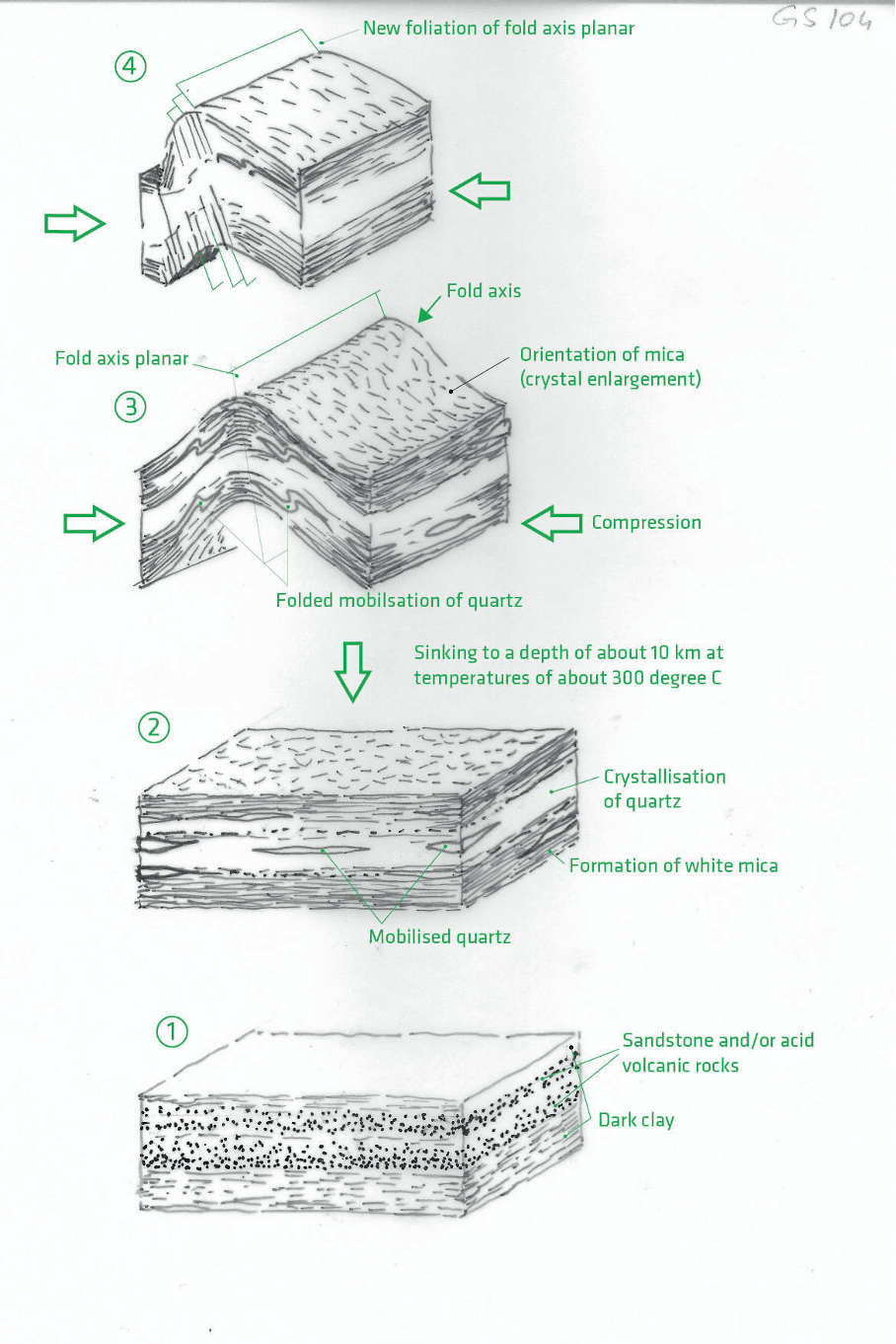Black Phyllites of the Greywacke Zone
These intensely schistose rocks originated
from dark, clayey sediments of the deep
sea. The dark, sometimes reddish color is
due to often-present organic components
and iron compounds. However, none of the
original clay minerals remain. The current
mineral composition is characterized by
metamorphism (rock transformation)
during a mountain-building process under
extreme conditions (temperature ≈ 350°C
- 550°C, pressure ≈ 200 - 1000 MPa),
resulting in mica, quartz, sometimes
feldspar, chlorite, and iron oxide.
The conspicuous reddish-brown spots
are referred to as "Brandenzonen" or
"Brandenschiefer," an old miner‘s term for
rust-brown weathering ore horizons.
Conceptual sketches of the formation.
1. Alternation of dark clays with
sandstones and/or volcanics: Deposition
in an ocean basin with coastal influence,
concurrently with active volcanism.
2. Formation of an initial foliation due to
subsidence. From temperatures of about
300°C (at a depth of approximately 10
km), the mobilization of quartz and the
formation of light mica start perpendicular
to the direction of pressure.
3. Constriction during mountain-building
processes and formation of
folds perpendicular to the direction of
constriction.
4. Further constriction and formation of
a new foliation plane parallel to the axial
plane.
Kids
What is a geopark?
A geopark is a special region with extraordinary landscapes. It is a place where you can see, experience and touch the history of the earth. A geopark is also a place to learn, whether in museums or show mines or on the hiking trail, you can always experience and discover new things.
Hüttau, Bischfshofen, Mühlbach am Hochkönig and also St. Veit im Pongau are part of the UNESCO Global Geopark Alps, perhaps you also live in a place that is part of the Geopark?
The Ore of the Alps UNESCO Global Geopark includes three museums and three show mines. In Hüttau, you can see many sparkling crystals and gold in the museum and hike deep into the mountain in the show mine to experience how copper was mined in the past. In Mühlbach there is the Mining Museum and the Johannastollen with many exciting stations to find out what equipment and tools were used in mining. In the Seelacken Museum in St.Veit im Pongau, you can relive the life of farmers in the past and immerse yourself in 4,000 years of mining history in the Sunnpau show mine. In the visitor centre in Bischofshofen there is an exhibition with lots of rocks and information about the entire Geopark.
What is a geopark?
A geopark is an exceptional geological region that is particularly interesting and exciting. If a region wants to become a Geopark, it is strictly scrutinised and reviewed every four years to ensure that all requirements are met. There are currently 229 UNESCO Global Geoparks around the world.
Geoparks are places to learn, you can learn a lot of new things about the history of a region, geology and geological history and, here in our region, about mining. Lectures and workshops with experts are also regularly held in the Geopark.
The towns of Hüttau, Bischofshofen, Mühlbach am Hochkönig and St. Veit im Pongau belong to the Ore of the Alps UNESCO Global Geopark. The Geopark is also home to three show mines and three museums that tell the mining history of the Pongau region. These are the Larzenbach copper mine and the "Ore, Gold and Minerals" museum in Hüttau, the Johanna Stollen and the Begbau Museum in Mühlbach am Hochkönig and the Sunnpau show mine and the Seelacken Museum in St. Veit im Pongau. The visitor centre in Bischofshofen presents exhibits from all Geopark communities and provides an overview of the Geopark.
What is a geopark?
A geopark is an area with geological features that is defined by boundaries. The aim of a geopark is to preserve nature for future generations and to combine this protection with sustainable tourism. There are currently 229 geoparks in 50 countries around the world.
Geoparks also have the task of raising awareness about the history of the earth, the landscape and geological processes and linking these with the cultural history of the region. This can be done on hiking trails with the geosites, with lectures and workshops by experts or with a visit to a museum or show tunnel.
To become a UNESCO Global Geopark, a region must undergo a rigorous assessment. If this assessment is positive, the "UNESCO Global Geopark" designation is awarded to the region for four years. A revalidation takes place every four years to ensure that all requirements continue to be met.
The towns of Hüttau, Bischofshofen, Mühlbach am Hochkönig and St. Veit im Pongau belong to the Ore of the Alps UNESCO Global Geopark. The Geopark is also home to three show mines and three museums that tell the mining history of the Pongau region. These are the Larzenbach copper mine and the "Ore, Gold and Minerals" museum in Hüttau, the Johanna Stollen and the Begbau Museum in Mühlbach am Hochkönig and the Sunnpau show mine and the Seelacken Museum in St. Veit im Pongau. The visitor centre in Bischofshofen presents exhibits from all Geopark communities and provides an overview of the Geopark.





